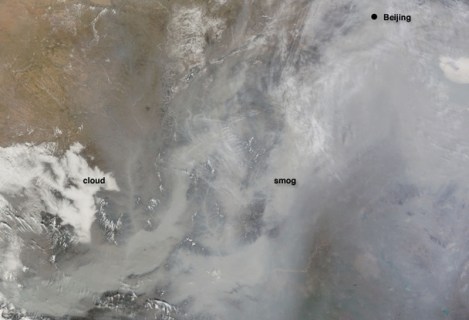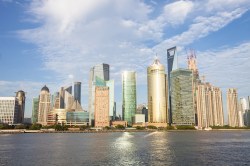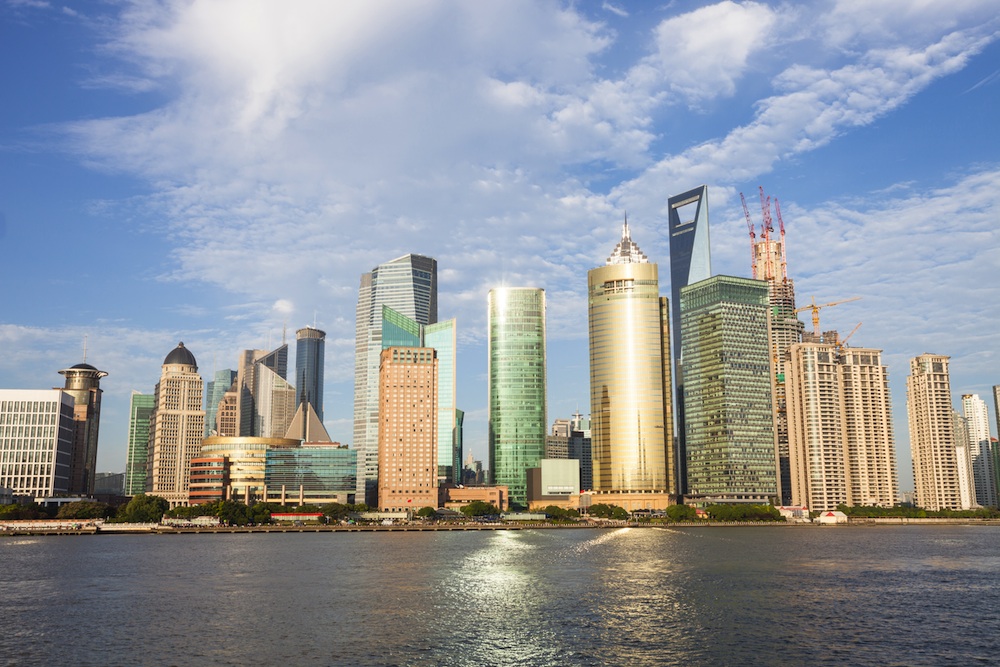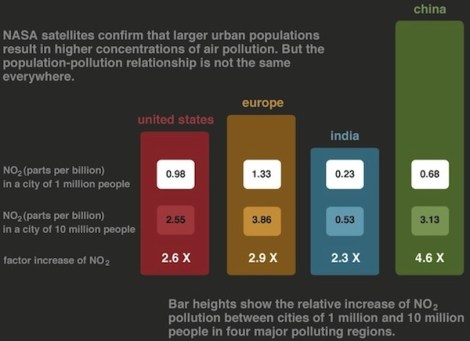
As we’ve previously written, researchers now know that cities obey some fascinating scaling relationships. The larger they grow in population, the more patents, infrastructure, crime, and economic output cities produce, each according to its own exponential equation. When a city doubles in size, for instance, it more than doubles its GDP.
Until now, though, the relationship between population and pollution has been less clear. Larger cities must produce way more of it, right? Beijing, with its 20 million people, seems perpetually steeped in the kind of smog that’s visible from space. And yet, larger cities are also supposed to have all kinds of energy-efficiency benefits, and 8 million New Yorkers can’t possibly drive as much as 8 million people who live just about anywhere else in America.

Shutterstock / Zhu DifengBeijing.
NASA scientists have been studying satellite data from across the globe in an effort to tease out the connect between population and pollution. In a paper recently published in Environmental Science & Technology, they’ve determined that cities follow a fairly similar scaling principle on the pollution front, too, although the relationship between population and air quality varies depending on where in the world you look.
The scientists focused on measures of nitrogen dioxide, or NO2, stuff that’s produced from burning fossil fuels and car traffic. It’s bad for you, but good for science: NO2 offers a close proxy for air quality. And the researchers were able to model NO2 levels in urban areas around the world (excluding obvious culprits like power plants) using data collected by the Ozone Monitoring Instrument on NASA’s Aura satellite.
The results suggest, unsurprisingly, that a million people in particularly energy-intensive parts of the world produce more pollution than a million people in a city where personal cars are still uncommon. A European city of that size, for instance, experiences six times as much NO2 as a comparably sized Indian city. And Indian cities, as they grow in size, experience different rates of pollution growth than cities in America, Europe, or Asia. As the scientists, led by Lok Lamsal at the Goddard Space Flight Center, conclude:
Urban NO2 pollution, like other urban properties, is a power law scaling function of the population size: NO2 concentration increases proportional to population raised to an exponent. The value of the exponent varies by region from 0.36 for India to 0.66 for China, reflecting regional differences in industrial development and per capita emissions.
Or, as NASA explains in this slightly more user-friendly diagram:
The population growth of Chinese cities, in other words, apparently comes at the greatest cost in the growth of pollution.
 This story was produced by The Atlantic Cities as part of the Climate Desk collaboration.
This story was produced by The Atlantic Cities as part of the Climate Desk collaboration.





